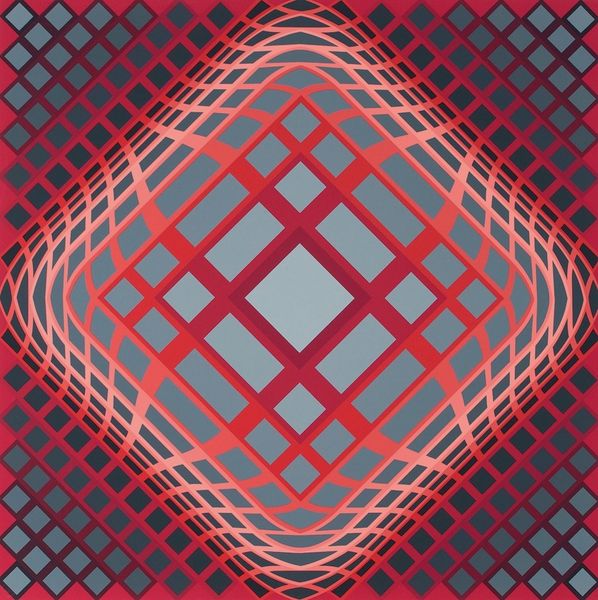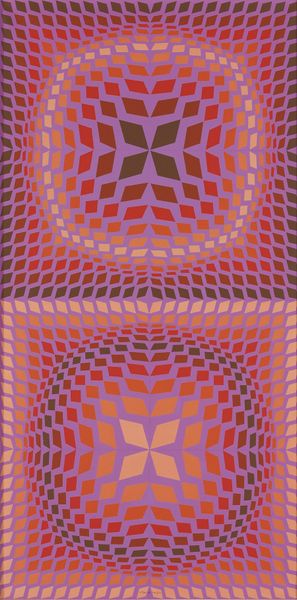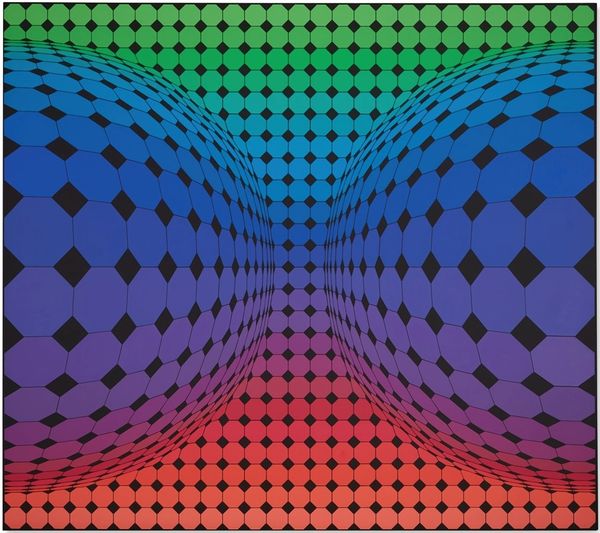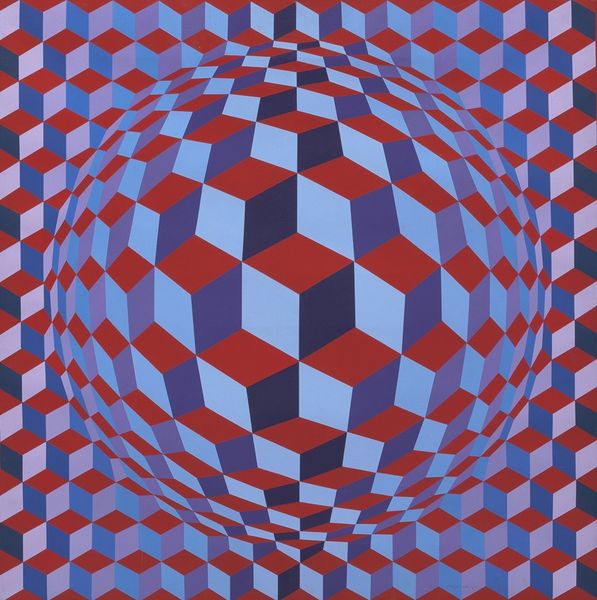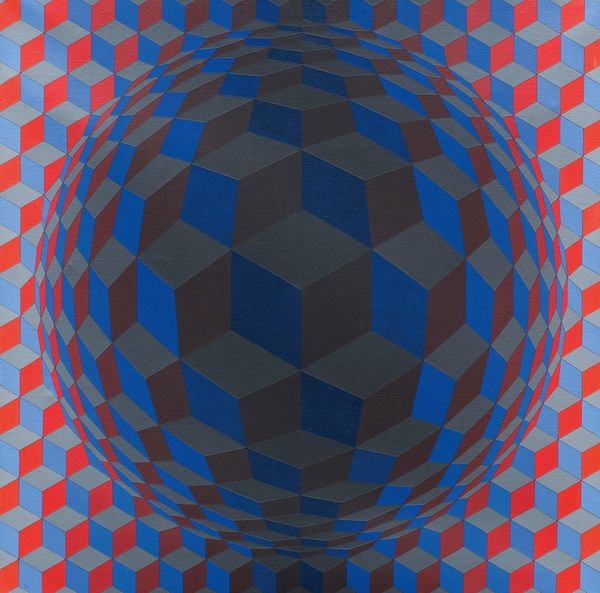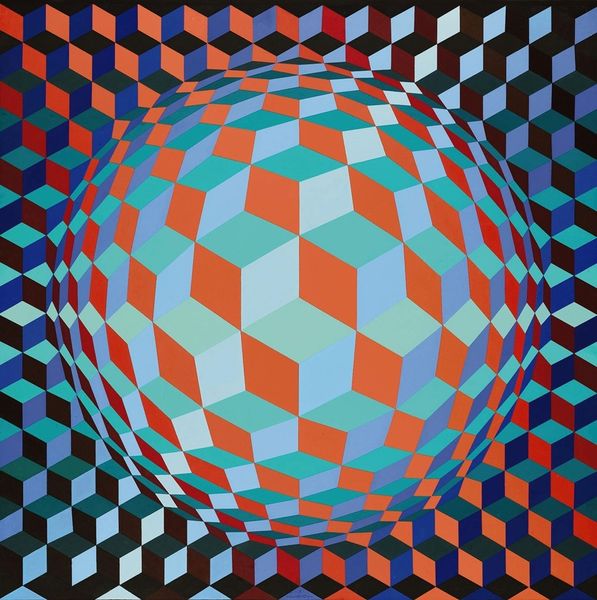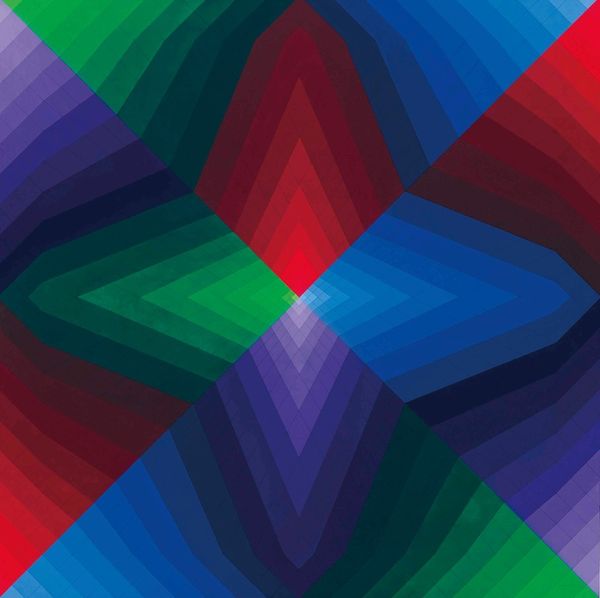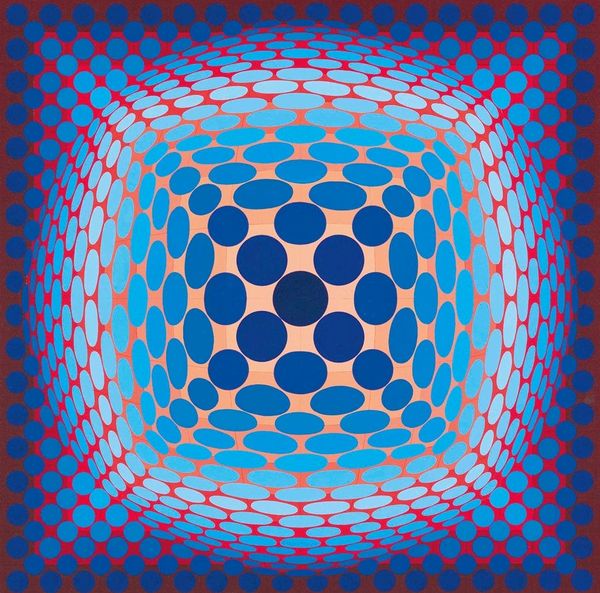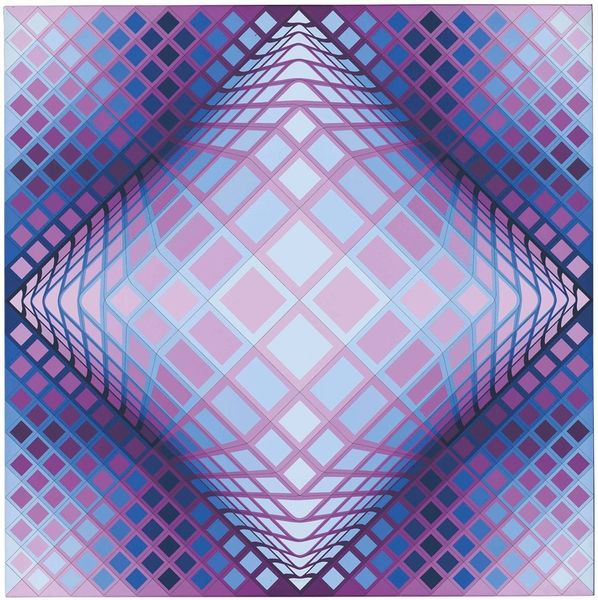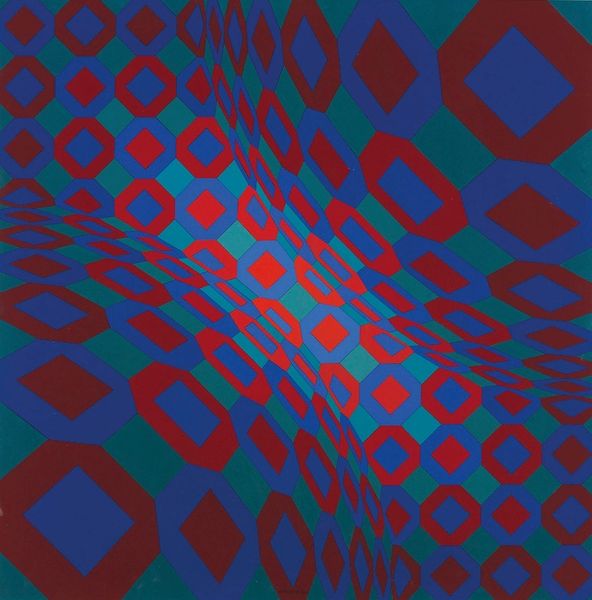
acrylic-paint
#
op-art
#
acrylic-paint
#
abstract
#
geometric pattern
#
abstract pattern
#
minimal pattern
#
organic pattern
#
geometric
#
repetition of pattern
#
vertical pattern
#
abstraction
#
pattern repetition
#
layered pattern
#
combined pattern
#
modernism
#
hard-edge-painting
#
repetitive pattern
Copyright: Modern Artists: Artvee
Editor: This is Victor Vasarely’s "Pauk-103," painted in 1968 using acrylic. It's such a visually arresting piece. All those lines and shapes create a sense of depth and movement that's almost dizzying. What do you see in this work? Curator: Intriguing choice of words; dizzying, yes. We are immediately confronted with a visual paradox. The flatness of the canvas is undeniable, yet Vasarely coaxes the geometric forms to suggest spatial recession and protuberance. Note how the careful gradation of colour – the interplay between the reds and greens – and the slight shifts in the rhomboid grid's configuration yield the illusion of swelling and sinking. The geometry, therefore, is not simply decorative but structural. How would you describe the impact of the limited colour palette? Editor: The limited palette—red and green—is essential, actually. It creates tension, a push-pull effect with the geometry. Without that stark contrast, I don’t think the illusion would be nearly as strong. Curator: Precisely! Consider also the 'hard-edge painting' technique, which removes any trace of the artist's hand. The colours are pure and unmodulated within each geometric cell, resulting in crisp, absolute contours. This absence of expressive brushwork is a critical aspect of its visual language, as it focuses attention on the optical effect itself. It allows the form to come to the forefront. Editor: So it’s less about what the artist *feels* and more about how the artwork *functions*. That makes sense. The pure geometric forms and strategic colors all work together to make our eyes perceive something that isn’t really there. It's like a science experiment but, like, beautiful. Curator: Indeed. This reflects a deliberate choice to engage the viewer on a perceptual level. I'm so glad to share my views and insight! Editor: It’s like a structured system of deception. Thank you for that explanation!
Comments
No comments
Be the first to comment and join the conversation on the ultimate creative platform.
